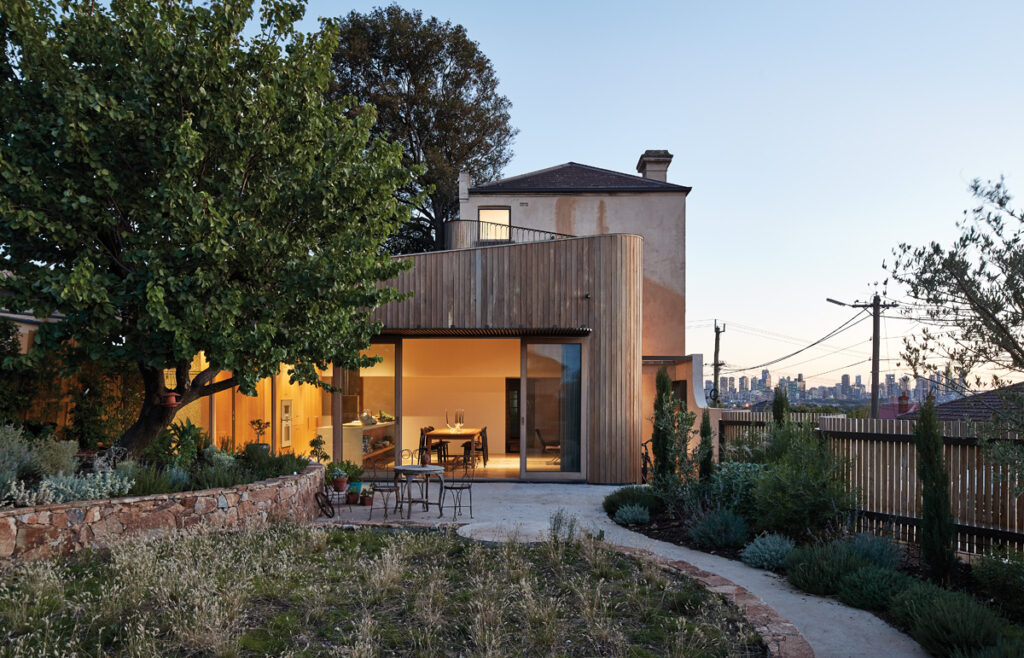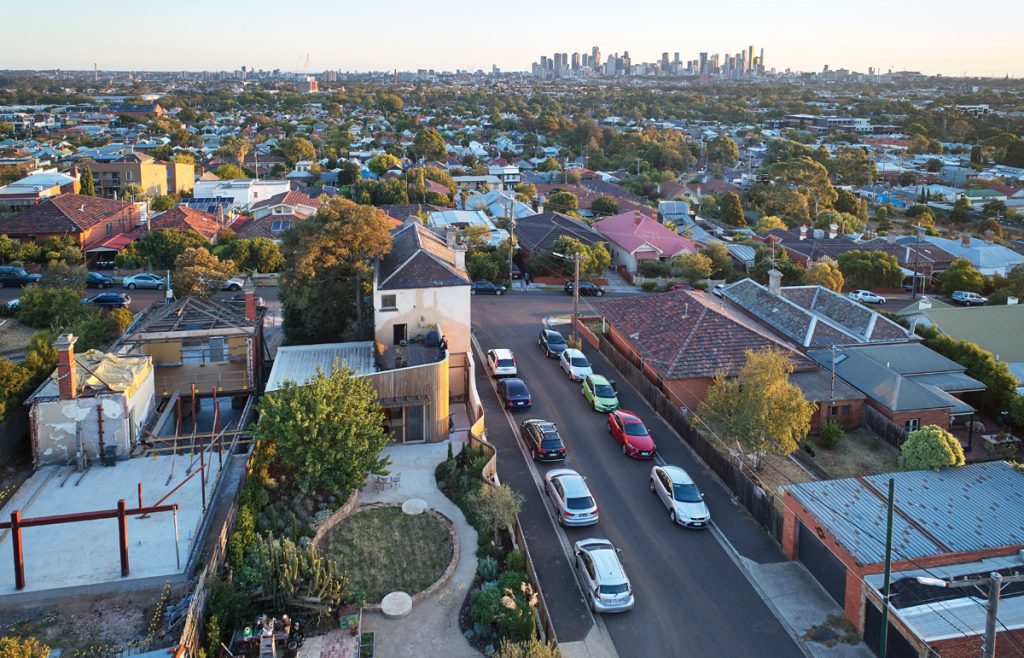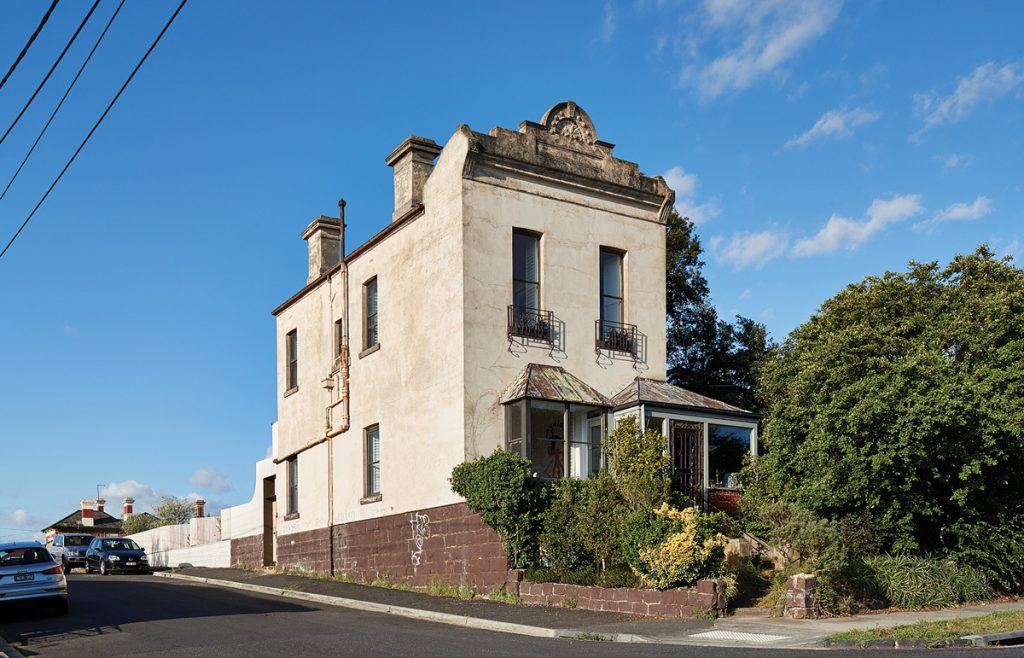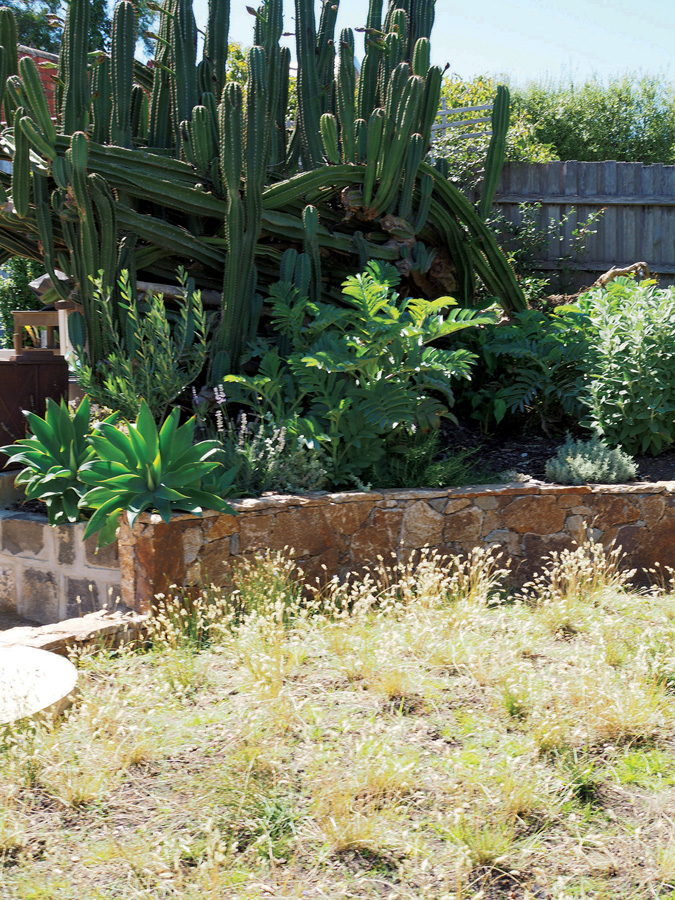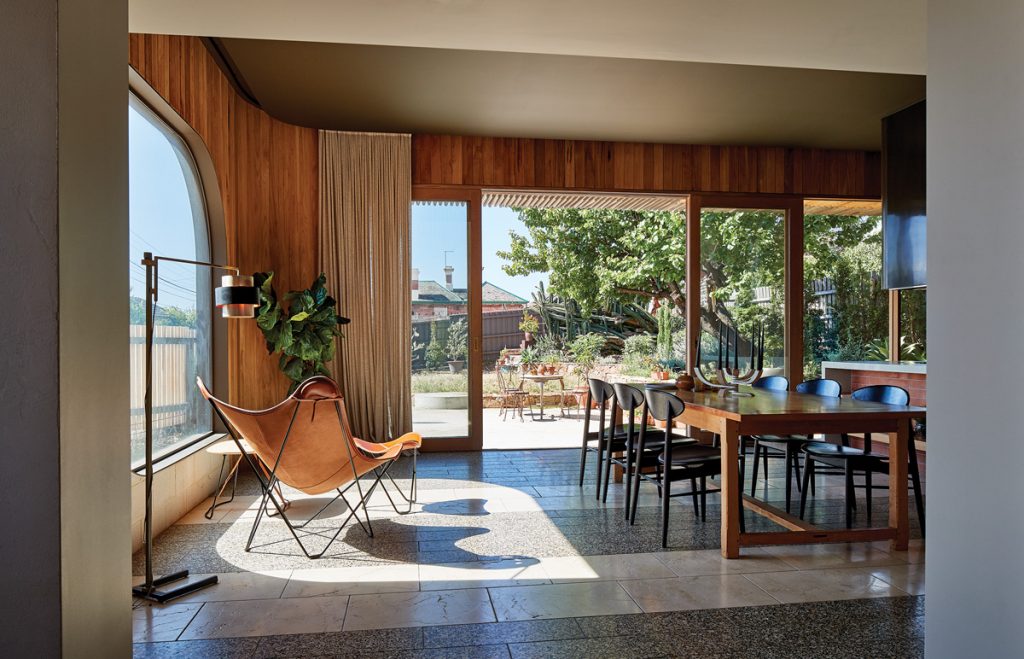Melting Pot
Steeped in history and blessed with rich soil, this eclectic Melbourne garden is a patchwork of cultures and memories.
Sitting in a freshly planted baby garden, looking back on a recently completed renovation and to the city beyond, with four women each on top of her game, felt like a very good thing to be doing on International Women’s Day. Green magazine editor, Tamsin O’Neill and I had gone to meet with landscape architect, Jo Ferguson and her client Liz, to have a look at their new project and talk about it. Fiona Dunin of FMD Architects had slipped out to meet us too.
From the outset, the garden had informed Fiona’s concept for the addition to the house. “We knew there was going to be a beautiful garden here, so our bit [the addition] would be sitting between that and the house,” she recalls.
“The original house is a typical Victorian design – a focus on just one elevation, the front, falling away to a shambles of lean-tos behind,” Fiona explains. “The way the house sits in the street, a corner block on top of a hill, we realised that in fact it was all about the side profile. We were reminded of women in the Victorian era. It seemed to us that a perfect way to be respectful to the original design was to reference the way Victorian women would restrict their flair and expression to the design of their bustles. A bustle was a really important way women in these times expressed themselves, long trains, lace, ruffles and hoops – all behind a fairly austere and modest façade. It was perfect for this place.”
Business at the front: party at the back.
The Bustle House, as it is now called, is a clear representation
of this concept. There isn’t a straight line of the new addition to see from the street and the side fence really does remind you of a perfectly stiffened taffeta train, set to define the garden.
“Jo suggested that a good place to start was to bring some of your favourite memories from childhood into the garden. Mine were of hanging around in swimmers and a T-shirt, red and freckle-faced, with a lot of concrete and a huge rubber plant that cracked up the paths with its pushy roots. We also wanted to celebrate my husband’s Mediterranean background, the smell of lavender in the air and thyme underfoot.”
Jo used the couple’s ideas as a foundation for her design, which had already started to take shape as she embarked on research about the history of the area.
“We are on Ruckers Hill,” Jo tells us. “This area is one big basalt plain, and Ruckers Hill stands high within it. The plain is ringed by ancient lava flows which makes it incredibly fertile – the soil is so rich it was a kind of food cupboard for the Indigenous nations before us. The grasslands that this hill rose from were foraged for centuries and became instant pasture as they had been dug over so many times. Some say that it was very close to here – somewhere along Merri Creek, perhaps at Rushall train station, that the Batman Treaty was signed.”
Taking her clients’ memories (and requirements), the “bustle” concept of the house addition, the ancient history, along with the more recent neighbourly pride, Jo’s garden design neatly incorporates all in a simple, well-considered layout.
The concrete and buckled paths of Liz’s childhood are remembered in the cement discs and curved path lined with a delicious-smelling border of herbaceous perennials. The Cretan herbs and wildflowers include sprawling sneaky thyme, and oregano that also pops up in the middle of the path as though it’s not supposed to. A huge droopy apricot tree (Prunus Armeniaca) sits a little bit raised in a bed held up by a dry stone wall, which Liz’s brother built with stones from Dromana. The apricot tree and the massive clump of Peruvian apple cactus (Cereus repandus) are the only plants left from the old garden. The cactus sits a couple of metres in front of the back fence, and will create a screen for the planned shed.
The wavy fence holds a couple of cheeky Banksia marginatas in its curves on the street side; Jo tells me that these trees
were often used by surveyors to triangulate maps – nice and dependable. The gnarly old pine has been replaced by a Pinus halepensis – an exclamation point at the end of the fence. Miscanthus transmorrisonensis waves above the new plantings – but not for long.
The best bit is right in the middle. In the centre of the garden is a perfect ring full of gently waving indigenous grasses and wildflowers. Jo wanted to do something in this garden that celebrated and acknowledged the remarkably generous soil, how very lucky they are to be on it and how they know it used to belong to someone else.
“It feels important, considering the history of this area, to display gratitude and somehow show that we appreciate what was here before us. We actually really mean it. It can be tricky to show respect. I want to do it without being misunderstood – like some kind of ‘greenwash’ type of thing …”
Hanging around in this garden and witnessing a genuine vision so effortlessly realised by these talented, competent women makes me think that this little circle of chirpy, bobbing grasses in the middle of this garden is a happy, fresh and open-hearted symbol of how to honestly acknowledge the past while being excited about what the future brings.
fmdarchitects.com.au
jofergusonlandscapedesign.com
The only treaty offered to our original people anywhere in Australia, The Batman Treaty was a land use agreement presented by John Batman to the Kulin Ngurugaeta (head clan-men of the area). Such a monumentally significant treaty, the meaning and interpretation is hotly contested. One argument is that it was just a pretence for taking Aboriginal land in exchange for a few blankets and boots while others say that it sought to recognise Aboriginal land rights. Another mystery is why the Kulin Ngurungaeta agreed (if in fact they actually did … ), one opinion is that “the clan-heads may have made a very informed decision” to “limit the numbers of settlers in Port Phillip” to Batman and his associates in an attempt “to at least curtail the destruction they had heard had happened elsewhere.”
